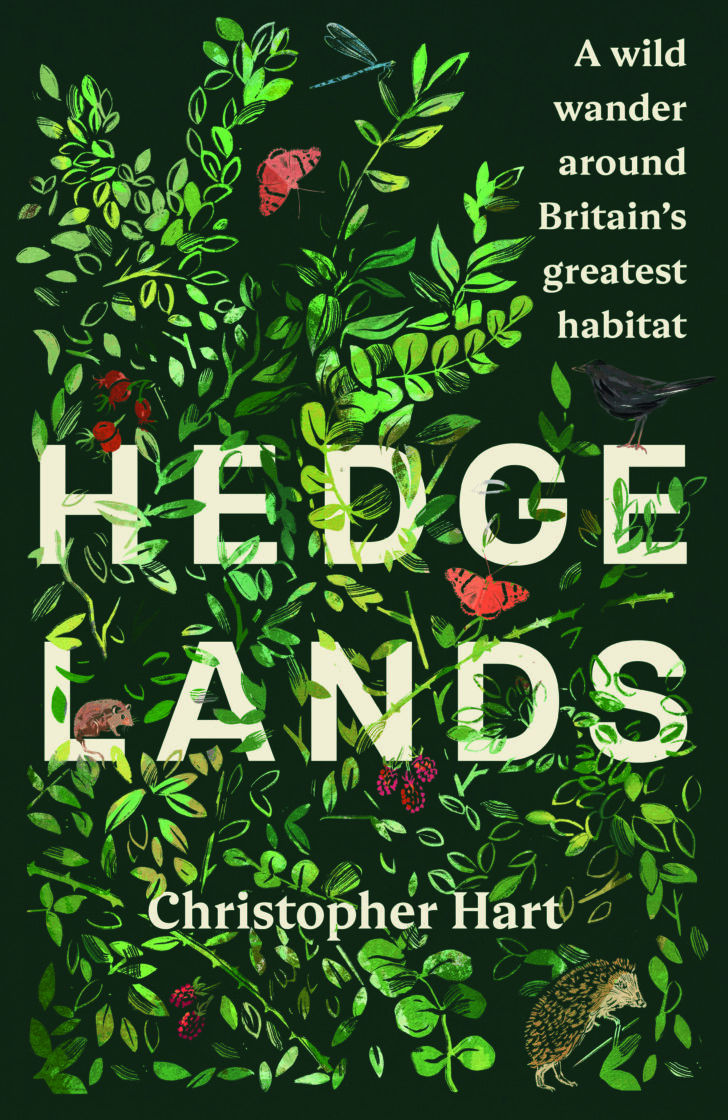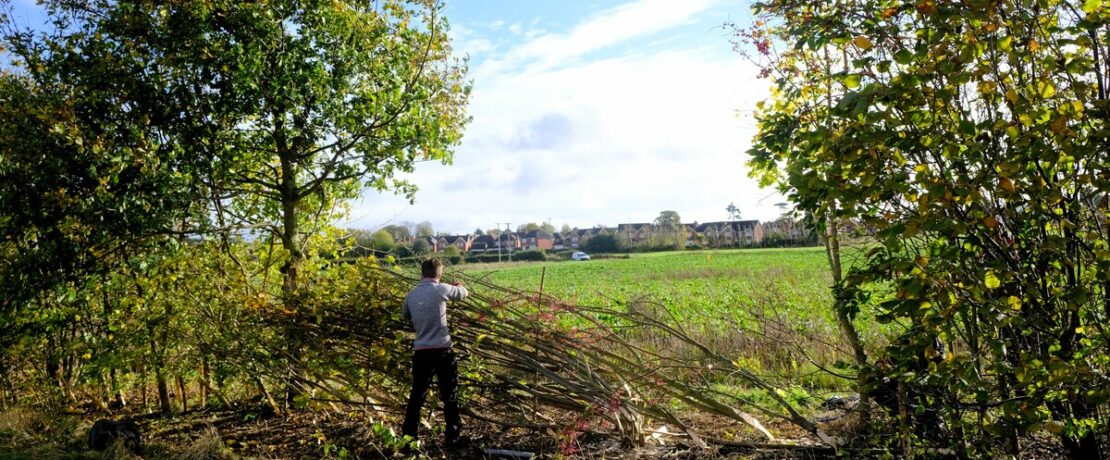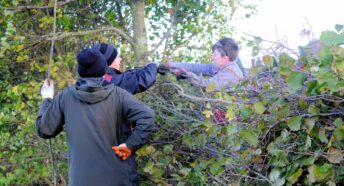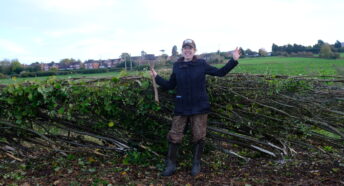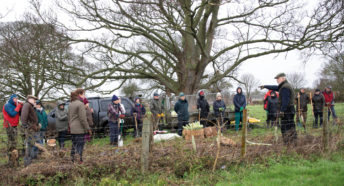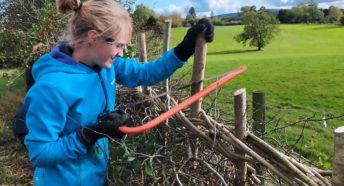Hedge helpers: the restorative power of hedgelaying
When Christopher Hart teamed up with friends to lay a hedgerow, the results astonished them all.
Five winters ago, we relaid a hedge in Wiltshire. The three of us – Jonathan, Harry and I – were no experts. We had only a rough idea of the principles of hedgelaying, and certainly wouldn’t have won any prizes for our efforts. We hacked and bodged and cursed – but luckily, you can’t easily kill a hazel, hawthorn or blackthorn. Cut them half through at the base, push them over and peg them down, and they’ll just grow back the stronger.
Soon, what was formerly a row of sad, wind-blown stumps with gnarled, deformed tops, once again looked like a laid hedge in winter, perhaps for the first time in two decades. Or a wildlife-laid or conservation-laid hedge, at least. The old countrymen with their billhooks, who lay hedges with such consummate skill, may favour stricter and more elegant styles: the Midland Bullock, the Leicestershire Bullfinch, the Glamorgan flying hedge…. The regional names for hedging styles are just as magically evocative of our countryside as the names of rare apple varieties, or breeds of sheep. But for maximum wildlife value, a rough-cut conservation lay is the best, as well as the easiest.
By the following spring, the old principle proved true: a relaid hedge is ‘new shoots on old roots’; and the numerous sliced and inclined pleachers, or stems, were now sending up a forest of rich new growth. The veteran stumps were magically rejuvenated, and soon it was a song-filled thicket bursting with blossoms and darting hoverflies; a linear ancient woodland.
Collossal impact of hedgelaying
Harry, studying for a degree in wildlife conservation, carried out surveys before and after, and the results proved astonishing. Within three years, he clocked an increase of insect abundance of 40%, and an average of 6.7 extra species at each measurement site. He estimated that insect numbers might double within 10 years. Oh, and foliage density increased from 20% to 100%: a dense, impenetrable thicket of a hedge, a perfect proxy for the precious but now rare thorny thickets that once dotted our wood-pastures, the most natural landscapes of this country, and the one to which almost all of our wildlife is best adapted.
The implications are huge. We have some 400,000km of hedgerow in this country, but at least half are ‘relict’ – growing out and dying. Hedges don’t need to be physically removed to disappear. They’ll disappear anyway if we do nothing – and with them, the rich wild food buffet of shoots and leaves, blossoms and nectar, hips, haws and hazelnuts that supports so many species.
So the effects of relaying our relict hedgerows could be colossal, and the increase in foliage density of such a vast extent of hedge would mean major carbon capture. And all of this without planting or taking up any more room. The hedgerows are already there, their root systems deep and centuries old, ready to bud, shoot and blossom once again.
About the author
Christopher Hart is an author, journalist and rewilder whose forthcoming book, Hedgelands: A wild wander around Britain’s greatest habitat, is a joyous journey around the life, ecology and history of the humble hedge.
